Kumrat Valley is a nature’s gem hidden in the verdant northern areas of Pakistan. The lush landscape, dense forest, sublime waterfalls and streams, picturesque lakes, and lofty mountains carry the allure to pull tourists towards it.
Surrounded by alpine trees, the terrain of the valley is rocky, offering adventurers perfect trails to trek and hike. Kumrat Valley is located in the Upper Dir District of the Khyber Pakhtunkhwa (KPK) province of Pakistan and boasts numerous sightseeing destinations, creating ideal spots for different activities, including camping, fishing, and boating.
This point has become a biodiversity hub in line with the government’s initiatives for promoting tourism and conserving the environment. Efforts have been taken to safeguard the animal and plant species’ habitat. Coupled with enhanced security measures, Kumrat Valley is a no-brainer to explore and enjoy!
Journey To Kumrat Valley:
My next destination, Kumrat, can be reached via jeep, bike, or public transport. The journey kicks off from Islamabad. I opted for a local bus, enduring an 8-hour drive to reach the Upper Dir District of KPK. The well-constructed roads facilitated a straight 4-hour smooth journey to Thal, with the bearable fare of a van around PKR 500.
Mostly, the route to Kumrat unfolds Thal as the last jumping-off place. Hiring a jeep so I can get to the destination for a fare of PKR 400-500 ahead of 45 km from Thal. The rugged and rocky terrain of Thal, navigated skillfully by the locals through the curves and twists of the region, takes us to Taki Banda.
Taki Banda serves as a rough region and the starting point of Kumrat Valley. From this place, I hike to the first destination, Jahaz Banda, after 3 hours. Porters and mules are readily available to carry the luggage, so the way forward can be covered conveniently.
Upon reaching the Kumrat Valley unfolds the breathtaking meadows like Taki Banda and Jahaz Banda, crystalline water bodies like Panjkora River, Katora Lake, Kala Chashma, and Shahzor Lake amidst the towering peaks, dense forests, and elevated Badagoi Pass.
Kumrat Valley’s Famous Tourist Attractions:
Kumrat Jahaz Banda
The adventure to explore Kumrat Valley starts from the first spot, Taki Banda. After trekking for 3 to 4 hours, I reached Jahaz Banda. This valley opens to a marvellous hill station surrounded by meadows, lush green grassland, snow-laden mountains, and pine trees.
Due to its geographical similarity to a ship’s deck, which in Urdu translates as ‘jahaz’, it is called Jahaz Banda. Located at a height of 3,100 meters above sea level, this place offers ideal trekking trails to reach the spot.
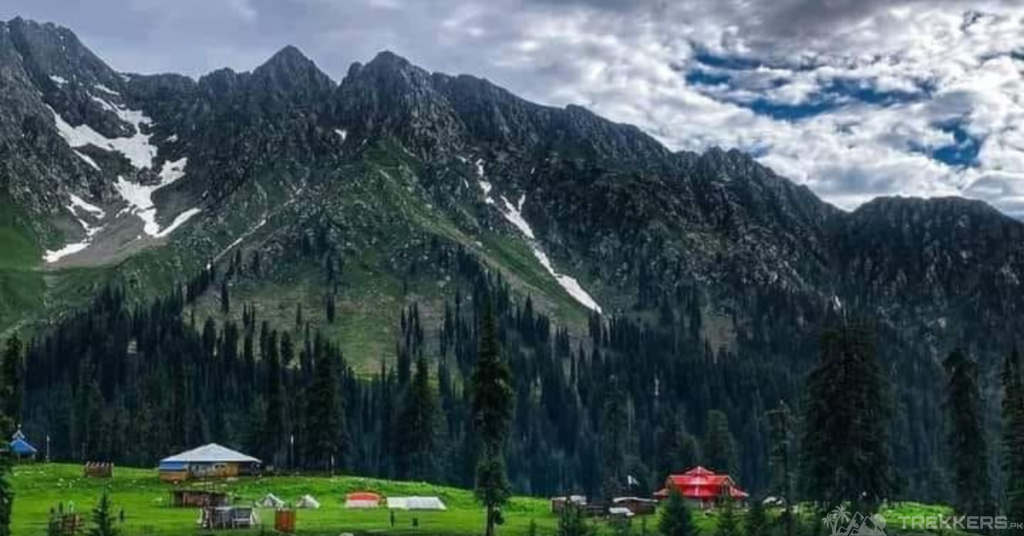
Kumrat Katora Lake
After spending a day, I headed up to Katora Lake. This lake is situated at an elevation of 3,400 meters, surrounded by higher peaks, including the Spindhor Peak, which rises to a height of 4,800 meters.
The name Katora, suggested in Pashto, means the shape of a bowl due to its physical resemblance to the structure of a bowl.
This serene place is reached after a 9 km distance covered from Jahaz Banda. The navigation of the trekking route is moderately challenging, so it is better to accompany the destination with a local guide.
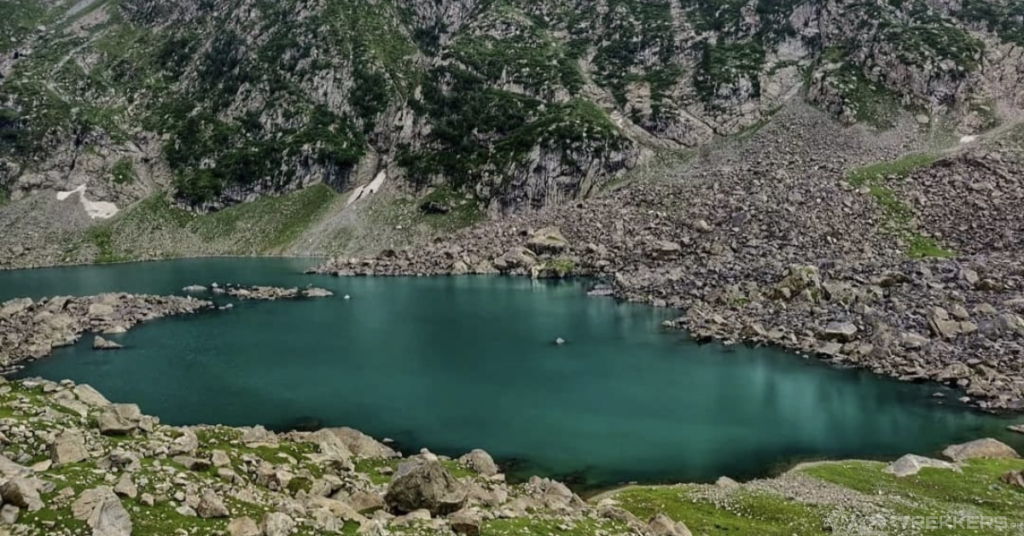
Kumrat Kala Chashma
Kala Chashma, surrounded by an alpine thick forest, gives a shady look to the water stream, thus called by this name. The magnificent view of the pure and clean waterfalls from the mountains gives a sightseeing element to the place.
Kala Chashma is below a steep surface from Jahaz Banda from a 2-hour slope trek. Covering a distance of 6 km, the trek to Kala Chashma can be reached in a day hike. The place is ideal for taking a breath of freshness and absorbing the pureness of nature.
After the Kala Chasma route concludes, it marks the beginning of another destination, Shahzor Lake. The road towards Shahzor is narrow and rough and is only accessible through trek routes.
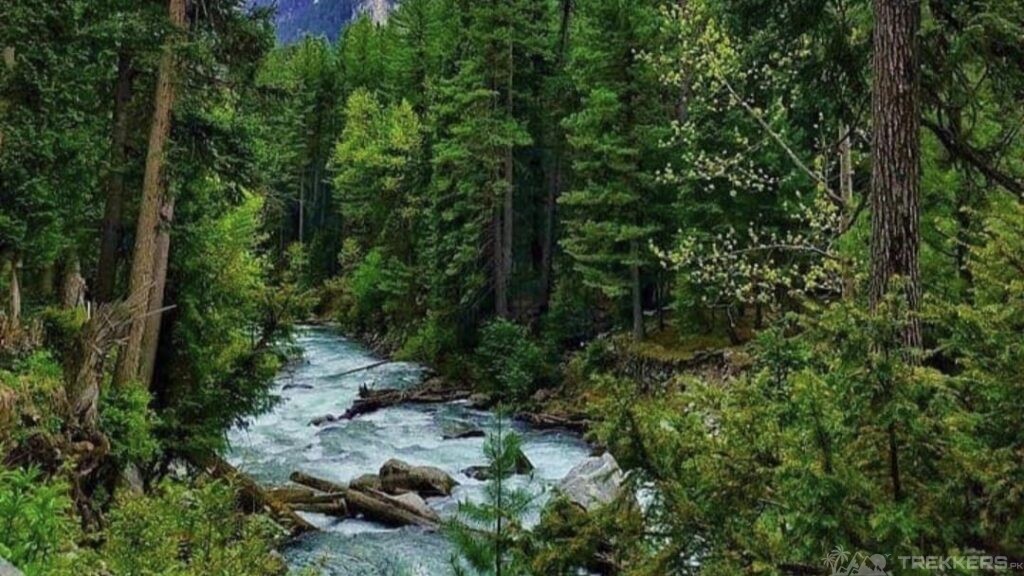
Kumrat Panjkora River
This ice-gushing river flows from the Hindu Kush Mountains, gracing the village with its serene view. Throughout the journey to Kumrat, this river contributes to the aura of the valley, and its striking waves create a musical symphony pleasant to the ears.
The river passes through the mountainous region of the northern province of Pakistan, Khyber Pakhtunkhwa. It traverses from Dir to Timergara and eventually converges with the Swat River at Chakdara.
Trout is the habitat of this river and contributes to the livelihood of the people of the Kumrat Valley. It also serves as a fishing spot for the tourists here. Winding its way through thick forests of pine trees presents a refreshing sight.
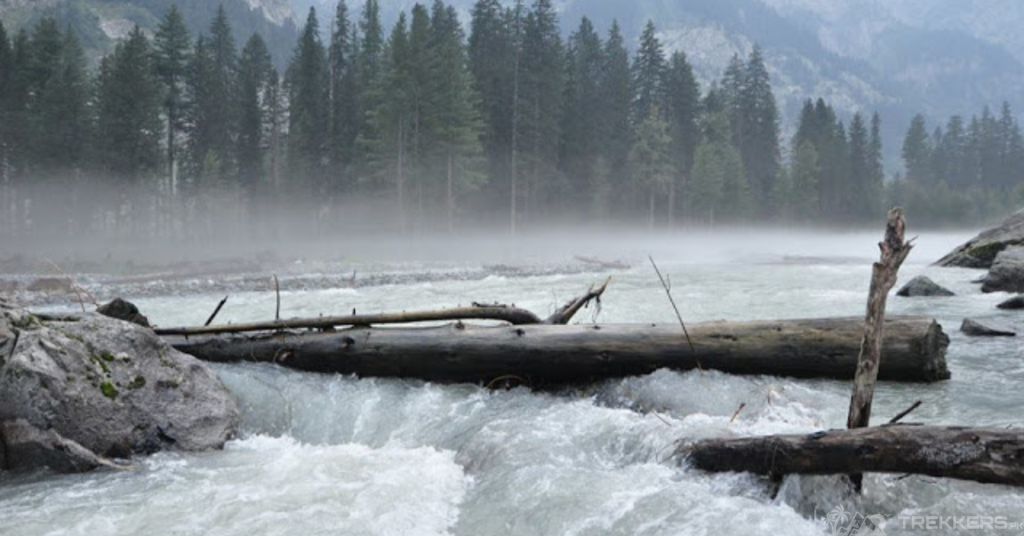
Kumrat Waterfall and Forest:
The Kumrat Waterfall and the Kumrat Forest are imperceptible destinations, giving a majestic sight. Long and thick pine trees welcome the waterfall from the mountains. This captivating vista is essential to behold while venturing into Kumrat Valley.
During our journey, we paused briefly to take shelter under the beholden beauty of Kumrat’s waterfall cascading heavily from the mountains. The verdant trees welcome the waterfall, providing a picturesque spot where individuals relish bathing and capturing moments through photography.
Sourced from the melting glaciers that blanket the Khyber Pakhtunkhwa province, the Kumrat waterfall emanates pure serenity. The site also has camping facilities for visitors to enjoy moments of pure bliss.
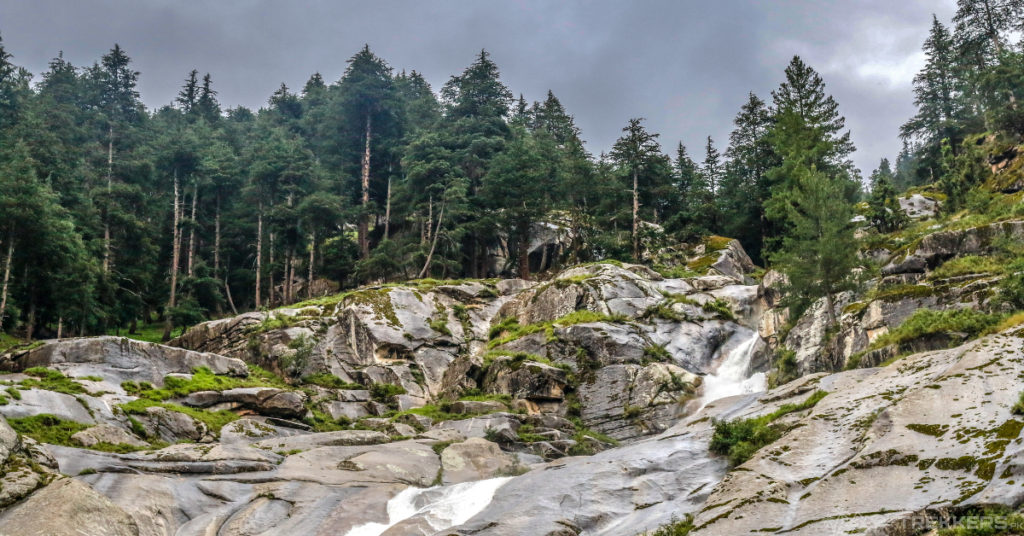
Kumrat Badagoi Pass:
Badgoi (Badogai), also known as Badawi, is the pass that connects Kumrat Valley (Upper Dir) to Kalam Valley (Swat) in Pakistan. This is a favourable route for tourists who manoeuvre from Kumrat to Kalam.
From Thal, this destination is 26 km away, and from Kumrat, it is at a distance of 14 km. The track to Badagoi Pass is rocky, making it moderately challenging while driving or riding here. Locals noted that the weather in this place is also unpredictable.
After reaching the top of Badagoi Pass at 3,523m above sea level. We can witness the picturesque vistas of the lakes, valleys, and meadows sprawling across both sides of the pass.

Adventure Activities in Kumrat Valley:
Continuing my journey to Kumrat, I engage myself in this site’s activities. Trekking to Jahaz Banda, fishing in the pristine Panjkora River, and relaxing in the camps make my trip worthwhile.
Trekking and Hiking Trails of Kumrat Valley:
There are multiple trekking trails where the route is inaccessible via any vehicle. I was immersed in the attractive views of mountains, rocky landscape, and cloudy season, which allowed plenty of places to trek and hike.
Jahaz Banda, Katora Lake, Kala Chashma, Kumrat Waterfall, and Shahzor Lake are all destinations sequenced after each other and best explored while trekking. The trek unravels the beauty of Kumrat Valley. So, try to be physically fit to cover these distances on foot.
Camping sites in Kumrat Valley:
Another distinction in this valley is that it offers camping sites where you can feel the serenity of the place. Camping facilities are available in some areas like Jahaz Banda and near Kumrat Waterfalls to experience the beauty of nature while being closer to it. I prefer to spend my time mostly in the camps, and the cost is affordable, ranging from PKR 500 to 1500.
Fishing Opportunities in Kumrat Valley:
Panjkora River, teeming with a bounty of trout, offers visitors the opportunity to indulge in the playful activity of fishing. I picked my trout and asked the cook near the motels to fry it for me. Till then, I pictured myself sitting beside the refreshing water and relishing the tranquil moments.
Flora and Fauna of Kumrat Valley:
The Kumrat Valley is enriched with diverse flora and fauna, adding to its intrinsic value. Deodar pine trees stand thick and tall throughout the valley, complemented by the soothing flow of the Panjkora River. Expansive green pastures blanket the valley, offering ideal sightseeing and photographic views. T
This region is also home to several wild animals: snow leopards, markhor, jackals, ibex, musk deer, Himalayan brown bears, and chakores. The harmonious coexistence of rich biodiversity and stunning landscapes makes Kumrat Valley a haven for nature lovers.
When is the best time to visit Kumrat Valley?
My journey was undertaken in the ideal summer season when Kumrat Valley welcomed me with its calm and cloudy weather. The temperature hovers around 20 degrees Celsius, giving pure, delightful views and mild conditions.
Curious about the valley’s charm in other seasons, I sought insights from the locals. They shared that during the monsoon season, the valley experiences a lot of rain and sometimes changes the strength of the rivers and streams.
In winter, snowfall adds an extra layer of challenge to the journey. It’s essential to prepare accordingly, depending on the season you choose to visit this enchanting destination.
Locals of Kumrat Valley:
During my entire tour, I encountered people whose friendliness and hospitality added even more charm to the experience. The warm and welcoming nature of the locals, the considerate jeep driver, and the helpful guide collectively made sure I felt at ease and comfortable throughout the journey. It highlighted that Kumrat Valley isn’t just about captivating landscapes; it’s also home to genuinely warm-hearted and beautiful people.
Conservation Efforts for Kumrat Valley:
Upon my curiosity about the conservation efforts of the valley, the locals shared insights into the government initiatives to rejuvenate tourism and ensure the safety of visitors.
They explain that the influx of tourists, the sturdy routes, and the hotels undercover in the journey testify to the fact that sufficient practical measures have been taken to boost Kumrat Valley’s tourism.
Additionally, the conservation of wildlife species is addressed through the establishment of Chitral Gol National Park, which is aimed at preserving this region’s unique habitat and species.
Also, when asked about preserving the greenery plains, the locals mentioned ongoing plantation efforts, mainly focusing on the Deodar, the national tree of Pakistan. Previously, the locals resorted to cutting down trees due to a lack of gas supply. Now, the government has promised to supply gas, and the Kumrat residents have assured them they will preserve the deodorized trees.

Conclusion:
Kumrat Valley stands as a utopian haven where the simple lifestyle of its residents harmonizes with nature’s raw beauty. This picturesque scene unfolds animals grazing in the beautiful lush meadows, ice-gushing mountain water cascading into streams throughout the valley around the thick pine forest, creating an enchanting atmosphere.
The narrow treks among the lofty snow-clad mountains enhance the visual spectacle of the valley. The rich diversity of flora and fauna is a testament to the fact that Kumrat Valley cradles a precious gem of nature in its embrace.
Kumrat is not just a destination; it is a captivating experience. If you have made it here once, your heart beckons you to return in time again. My hearty visit to this valley will always remain alive in my memories, a testament to this place’s allure.
In the vast realm of KPK, numerous gems are still waiting to be discovered, each promising its unique adventure and charm.
To know more about the enchanting meadows of Kumrat Valley, head on to my journey of Exploring Jahaz Banda: Meadows, Mountains, and Memories.